If you want to know about the toilet design or kitchen design or ramp design or staircase design, please click the link.
In architecture, the plan, elevation, and section are three primary views used to communicate the design of a building or structure. Each of these views provides a unique perspective and set of information about the design.
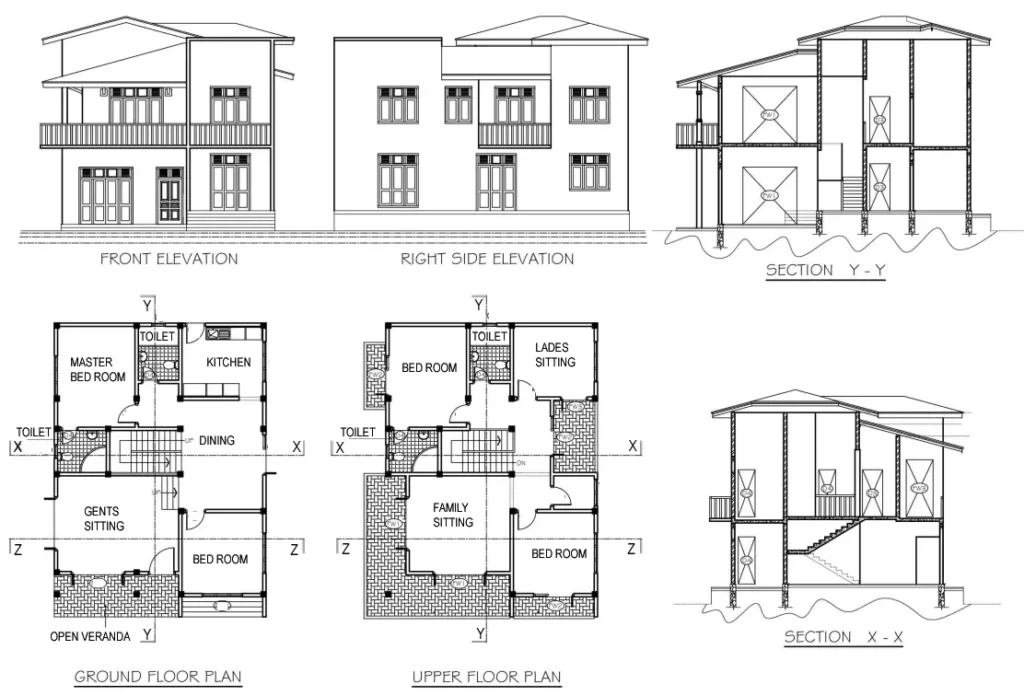
1) Introduction
- Designing happens in a studio/office of an architect.
- This however has to be transferred to the site for execution. In any case the design idea has to be recorded.
- For all these activities a language is required.
- This language has to be graphic as the information to be transferred is of that nature.
2) Architectural communication
- A language is used for communication.
- Like English, Hindi etc. there is also the graphic communication language.
- This language is used for communicating data that has three dimensions.
- Like the noun, verb, adjective etc. the graphic language has plan, section and elevation as its components.
- As in the case of grammar there is a relationship between these, and this language has to follow these rules to make sense.
3) Language of architecture
- Architecture is placing designed objects in space to organize space for an envisaged activity.
- The design and placement of these objects are born out of thoughts that have to be crystallized.
- The design and placement of these objects needs to be transferred on a recordable format for which it has to be drawn instead of written as is done in other languages for transferring a thought.
- The thought process happening in an architect’s mind has to be put on a readable format and sent to the site where the thought can be executed.
- Architects use drawings that comprise plans, sections and elevations to communicate specific ideas to the executing agency for the actual conversion of the idea into a built form.
- There are other drawing formats like isometric, axonometric, perspective etc., but these are normally not used for construction activities.
4) Individual identity of plan, elevation and section
- Plan, Section and Elevation while maintaining their interrelationships for making sense also their independent identities.
- A plan is a horizontal top view or a horizontal section of the object or the organization.
- A section is a view of the object or organization when cut by a vertical plane to show the internal construction of the object or organization.
- An elevation is a two dimensional view of the external vertical facade of the object or organization.
5) Meaning of plan, elevation and section
i) As drawing
- As explained in the previous slide as drawings, the plan, section and elevation have a specific information to provide to the reader.
ii) As a statement
- The drawings of an office represent the standard of an office.
- The plan as the representation of the division of spaces in a spatial organization, placement of furniture, placement of furniture etc. representing the workability of space can be seen as the manifestation of the element of function in architecture.
- The section as the representation of the components that support the structure like walls, slabs, beams etc. can be seen as the manifestation of element of strength in architecture.
- The elevation that represents the external look albeit in two dimensions can be seen as the manifestation of the element of beauty in architecture.
- The plan helps in defining the spaces for the envisaged function

6) Relationship (plan, elevation and section) beyond the physical
- Plan, section and elevation are related to each other by the physical dimensions and are drawn by the principles of architectural or graphic drawing.
- There are, however intangible relationships between these also.
- Often the plan ‘says’ that it wants to be something special.
- Plan has been called the generator of the third dimension.
- Often the section or elevation may play the determining role.
- Exciting design solutions emerge when the composition of these components of the language is done more like poetry than prose.
- A design may emerge from an exciting section or an elevation and not necessarily a plan.
- Designing in any case needs to be done three dimensionally and the plan, section and elevations are to be used only as the representation for communication specially for the stages of execution.
- The exact dimensional relationships of the plan and elevation have to be there for the accurate communication and readability of the idea.
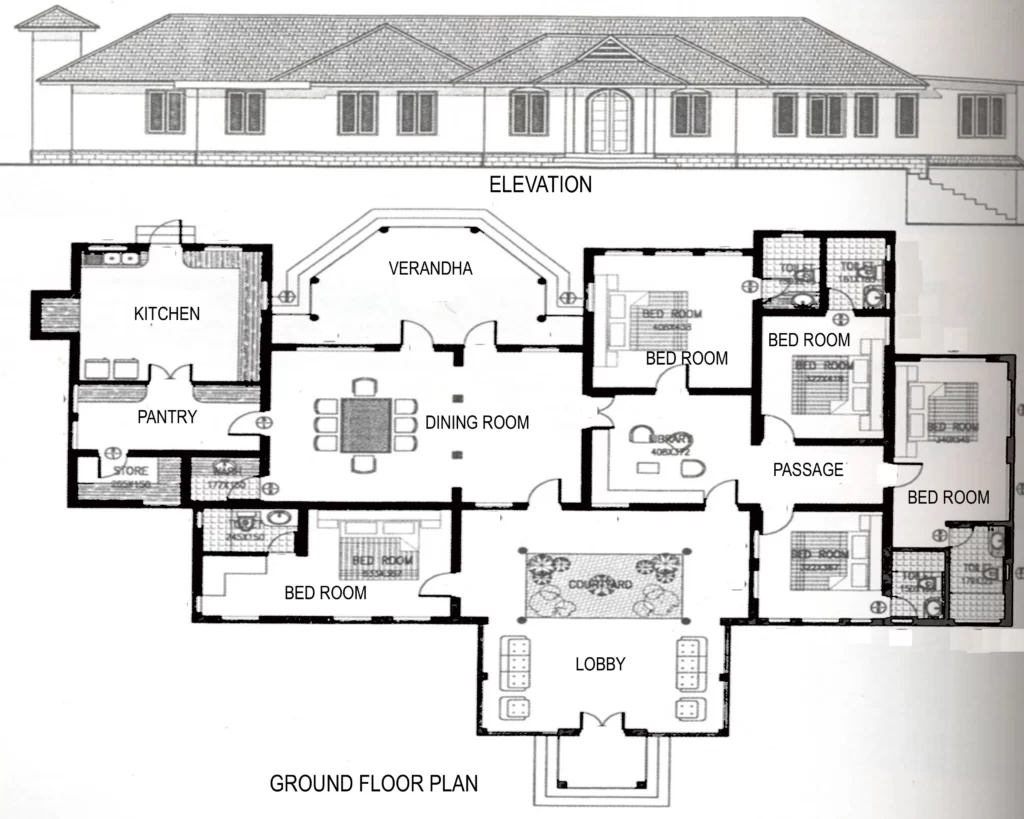
- Let us try an experiment. Try drawing an elevation for the built mass that has a plan form as shown in the adjacent figure.

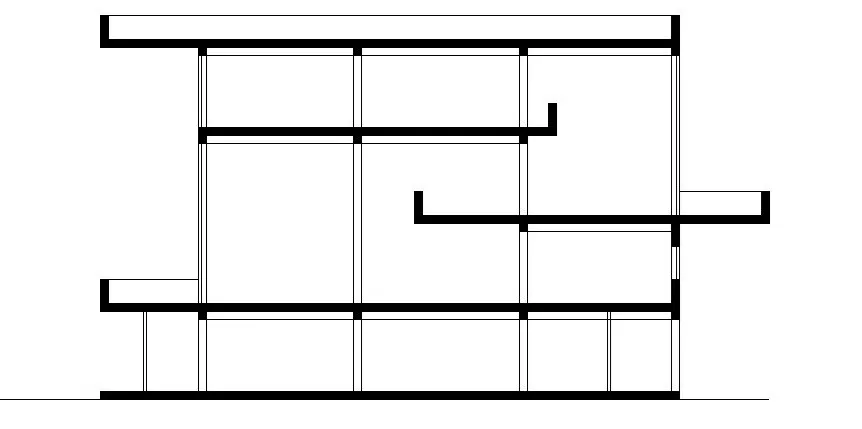
- This spatial organization that required interrelationship of spaces in the vertical plane demanded that the section be worked out in the first instance. The situation here is that the section is saying something for the design to happen. The section in this case is building an intangible relationship with the plan.
- The elevation below is an outcome of the exact requirements of the planning Situation.
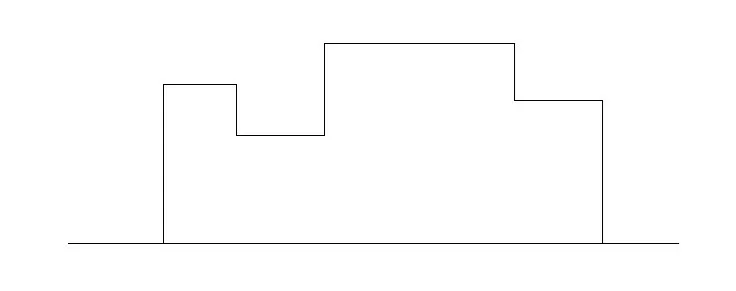
- It, however, looks so drab that it is ‘asking’ for a change.
- The elevation below has been generated to make it more exciting visually by a slight manipulation of the plan form.
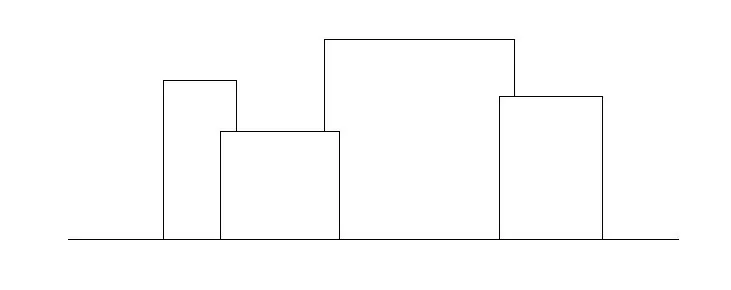
- This is how the intangible relationship of the plan and elevation can be realized.

- Such spatial organizations can not be generated by two dimensional thinking and require conceiving space in totality.
7) Interrelationship of plan, elevation and section
- Plan section and elevation are intrinsically related as each by itself cannot make a statement just as a noun by itself does not make a sentence.
- The design can not be conveyed if any one of these is missing.
- To make a sentence, a paragraph, a story or an article certain sequencing and grammatical rules are required. The same can be seen in the use of plan section and elevation in architecture.
- Like poetry whence, certain liberties can be taken with grammar to project a thought more sensitively, here too the order can change at least in terms of importance or first representation. For example, a design may start by representing a section first.
- Normally, however, the design process would follow the lines of resolving the function, strength and form that are represented by plan, section and elevation on the intangible front.
8) Complexity and contradictions in expressing 3-D in 2-D
- While designing needs to be done in 3-D, the representation has to be in 2-D to make the representation accurate and correct.
- 3-D representations can have numerous distortions and can not communicate the exact dimensions.
- 2-D representations do not project the exact look of the built mass but are meant to communicate the exact information to the site for execution of the design idea.
- Nobody sees the plan or an elevation, but these are used to represent the design idea in its technical exactness.
- Notice the difference in the feel of the elevation and the actual view of the built mass.

9) Drawing as a mode of expression-of a style
- While architectural drawing is governed by a specific technique that is the rules of drawing, there can be a style of drawing.
- Most architects develop a unique style of their own that can be compared to people having their own handwriting or signature.
- While the drawings have to be technically accurate and correct these can be stylized to become specific to an organization.
- The feelings generated by these pictures can not be expressed in technical architectural drawings.

- Such spatial organizations and built masses can not be conceived by drawing Plan section and elevation . The plan section and elevation can be drawn later to record and communicate the idea.
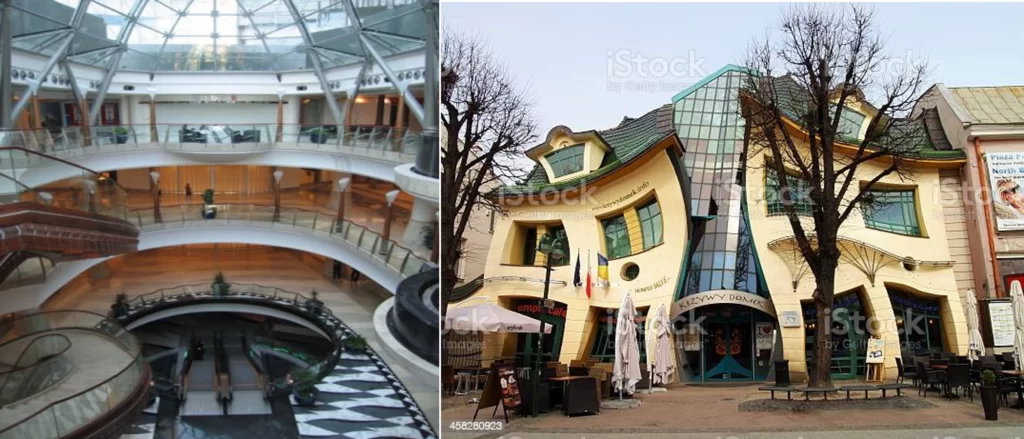
9) Conclusions
- Plan, Section and Elevations are components of architectural drawing.
- These are required to communicate the design.
- These are related by the rules of architectural drawing.
- These three also have a relationship beyond the physical.
- These are interdependent and individually can not communicate the complete design.
Overall, the plan, elevation, and section are essential tools for architects, designers, and builders to communicate the design of a building and ensure that it meets the needs of its users.
So good